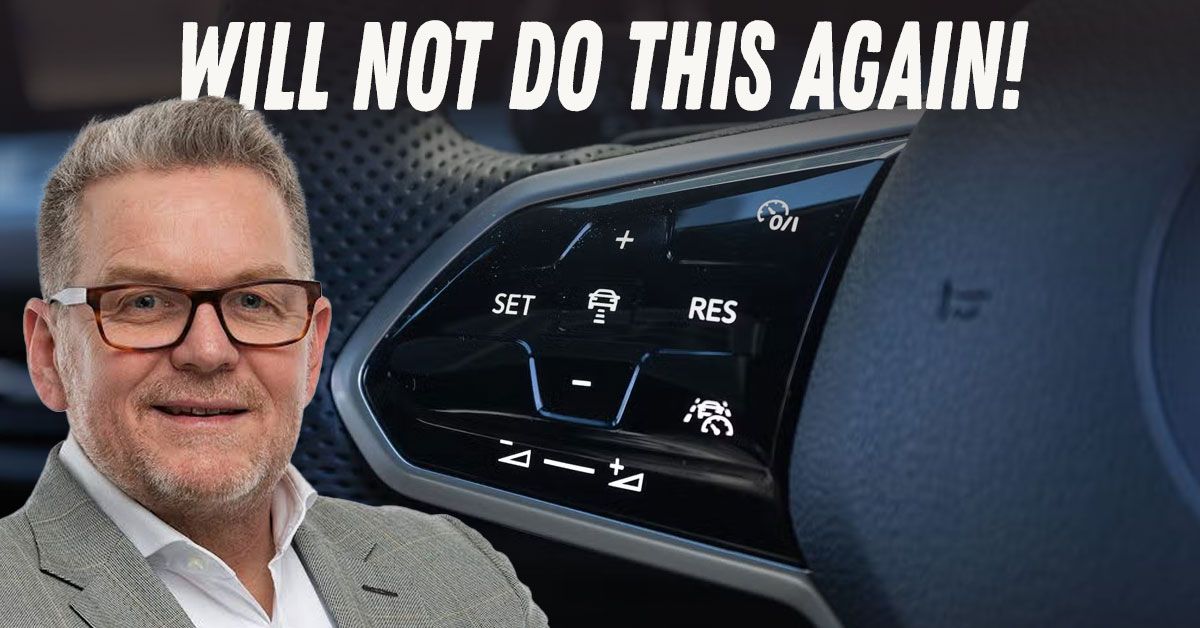Volkswagen Chief: Will Never Make This Mistake Again


Volkswagen seems to have finally realised what nearly every driver has known all along- that touchscreens are a disaster and cramming every function into them is stupid. Volkswagen's design boss Andreas Mindt recently told Autocar that the company is rethinking its approach to touchscreens and touch-based controls. He further confirmed that the future VW models will have physical controls back in play for all essential functions. The upcoming ID.2 EV will be the first model to feature the revised approach. Enthusiasts and hardcore drivers can all breathe now...
It was in late 2022 that Volkswagen announced its bold and highly unpopular decision to make a complete transition to touch-based buttons and controls. Even the steering-mounted controls (haptic panels) were made touch-sensitive, causing huge inconveniences to users. Even the climate control system had haptic panels- a pain for many.
A lot of people expressed their sheer dissatisfaction with the same, but this did not deter the carmaker from going forward with its decision. Over the years, we came across distress posts and stories of many frustrated drivers, urging to bring back normal buttons for steering-mounted controls. Taking these into account, in 2023, Volkswagen decided to roll back the touch-based steering update.
CEO Thomas Schäfer explained this by saying: “We are sharpening our portfolio and our design, plus creating a new simplicity in operating our vehicles. For example, we are bringing back the push-button steering wheel. That’s what customers want from VW”.
Now the German giant's design boss Andreas Mindt has spilled details on the course correction. He confirms that the upcoming VW cars and EVs will have normal physical controls for vital functions. There are in fact five of them.
The production version of the ID.2All concept, known to be out next year, will be the first model to feature 're-buttoning'. It will have physical controls for functions like volume, heating on both sides, fans, and the hazard light.
“They will be in every car that we make from now on” Mindt confirms. “We will never, ever make this mistake any more. On the steering wheel, we will have physical buttons. No guessing any more. There's feedback, it's real, and people love this. Honestly, it's a car. It's not a phone: it's a car.”
He added that while touchscreens will continue to play a role—especially as legal requirements mandate features like reversing cameras—the five most critical functions will always have dedicated physical controls. This decision reinforces the importance of tactile feedback and simplicity, ensuring drivers have immediate and intuitive control over essential functions without relying solely on digital interfaces.
Recently, we came across similar decisions and announcements from multiple automotive companies- of moving away from touchscreens and haptic controls, and of intentions to bring back oldschool controls. The Korean giant Hyundai declared the over-reliance on touchscreens and touch-based controls as a major safety hazard and course-corrected to traditional switches last year. More recently, BMW too came up with a similar decision.
Short answer- No. Touchscreens definitely have their advantages and plus points as well. They also contribute to elevating the cabin experience. What we need is rationalisation and a user-first approach in designing and alloting screen-based and touch-based controls and functions.